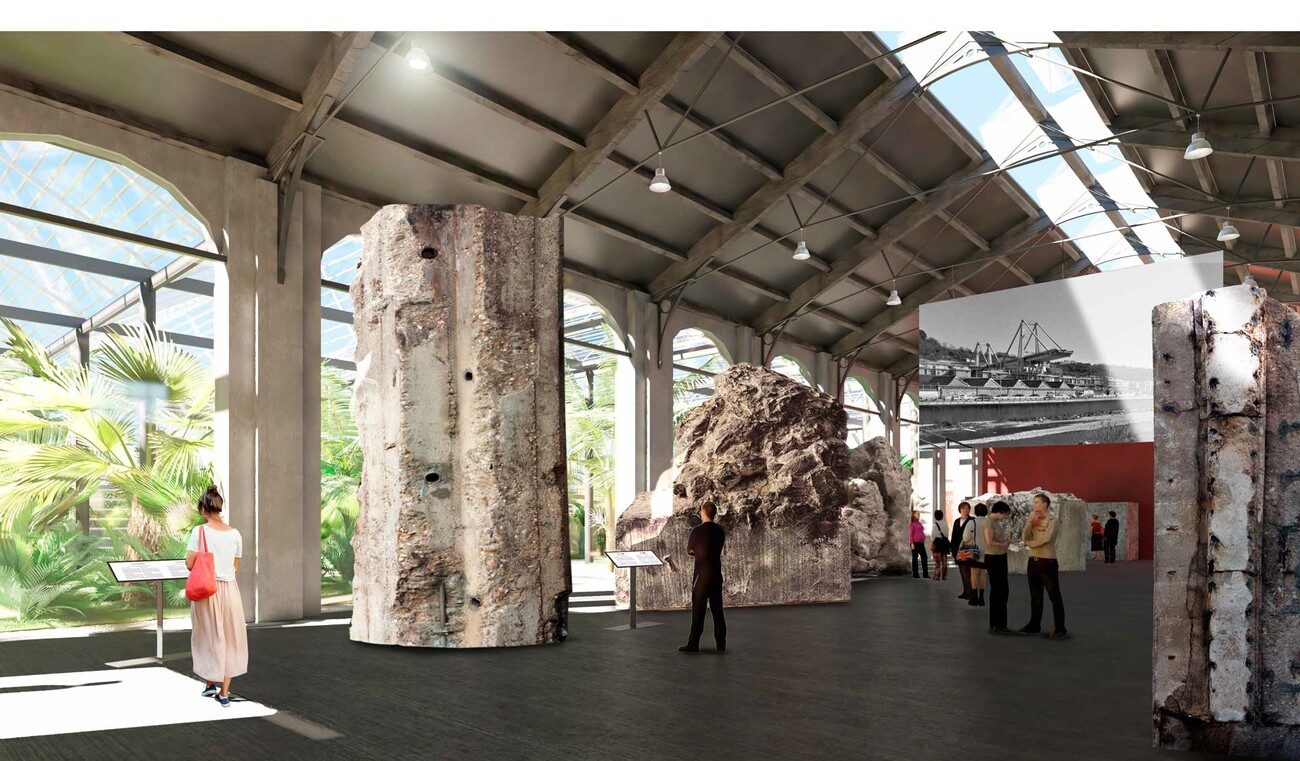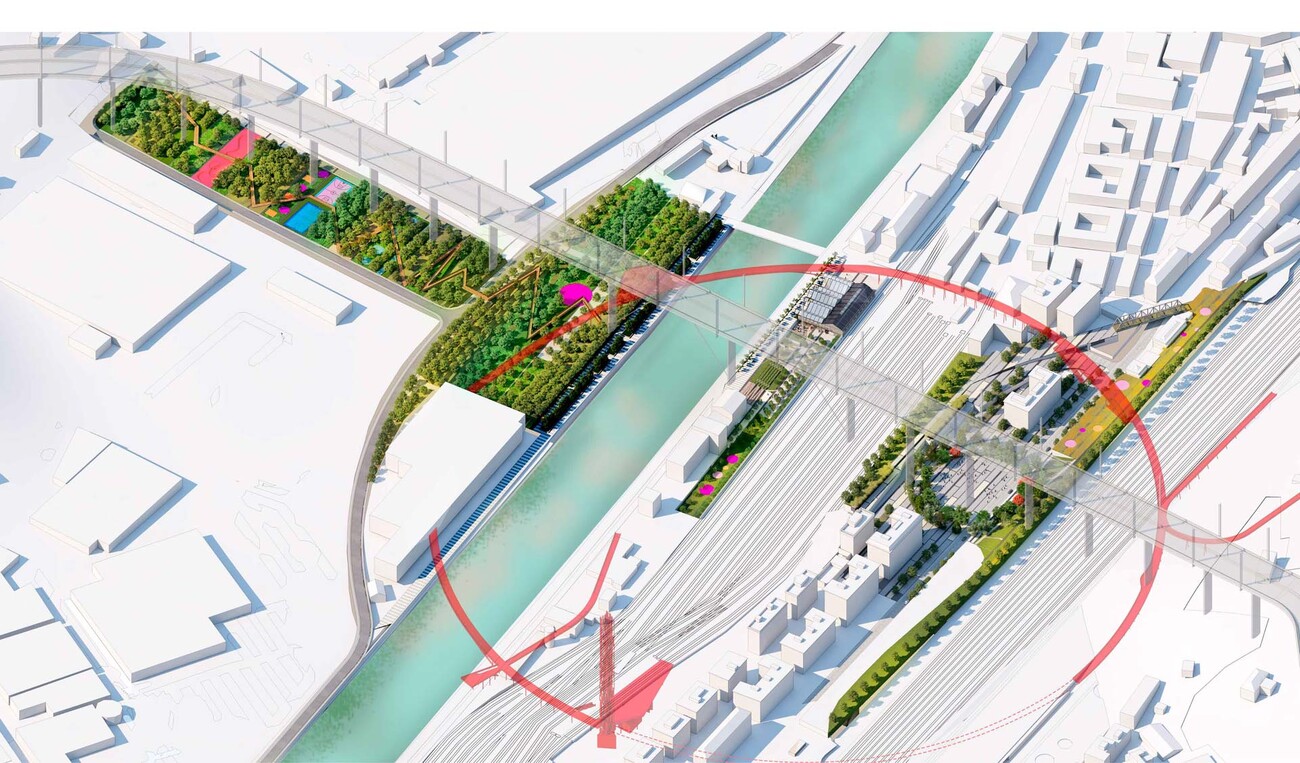Masterplan Polcevera Park – Under the Bridge, Genoa, Italy

Comfort in outdoor spaces:
Access to comfortable outdoor spaces year-round significantly enhances people's quality of life. To build environments that offer adequate outdoor comfort, specific planning is required. The masterplan including a memorial and a greenhouse at Polcevera Park focused mainly on the performance of vegetation. The strategy influences solar radiation and wind movement, all seasons and uses seasonal and geometric characteristics.
Shades or covers designed to shield from the sun during peak hours should not obstruct the refreshing breeze originating from the south and southeast. What keeps the sun out during the hottest days and hours must not be blocking the breeze coming from the south and southeast. Tall vegetation is ideal for sitting and resting areas or even for continuous activities. In winter, sunlight creates the comfort zones, so deciduous trees must be chosen. The force of the wind in winter must be limited, so green barriers of low height but high density are also needed. Transsolar's studies analyzed the solar radiation and allowed conclusions to be drawn about the size and location of the comfort zones and changes during the year.
The Memorial and the Greenhouse were designed as zero-energy buildings:
In the memorial, an underfloor heating and cooling system only airconditions the lower part of the room, i.e. the part that visitors actually use. This prevents the entire air volume from being conditioned and saves energy. A reversible heat pump supplies this radiation system, it exchanges heat with the geothermal system underneath and receives its drive energy from photovoltaic panels on the roof. In winter, fresh air is provided mechanically by an AHU, which is also fed by the heat pump. In summer, however, the museum is ventilated purely naturally via openings on the underside and skylights. On particularly hot days, ceiling fans increase air movement and reduce the perceived temperature. The central skylight provides diffuse natural lighting.
The greenhouse is purposefully aligned and passively achieves the desired comfort. In winter, the sun usually provides sufficient heat. Only at night or on particularly cold days do finned tubes heat; they are also supplied by the heat pump.
In summer, natural ventilation protects against overheating: numerous different opening options allow the air to move naturally. Here too, ceiling fans provide more air movement if required. The horizontal brise-soleil protects against solar radiation in summer and limits overheating but allows radiation to enter in winter when the sun is low. Natural light enters diffusely through the north-facing glazing, which is not shaded from the outside by the brise soleil.
For artificial light outdoors, Transsolar proposed luminaires with integrated PV cells and energy storage.




